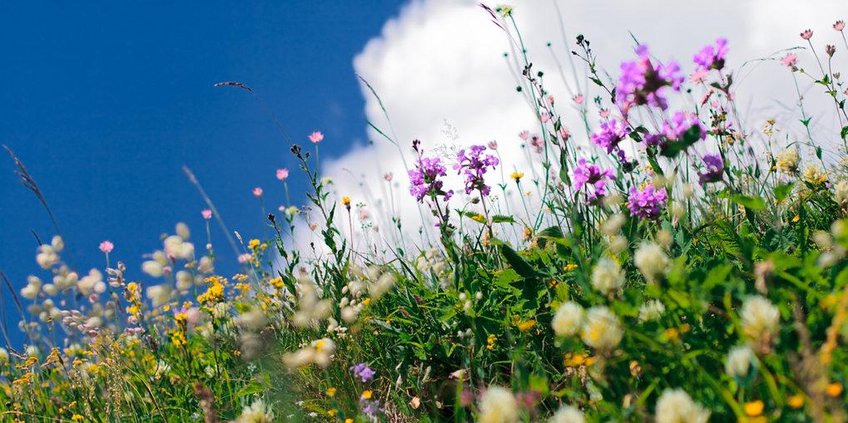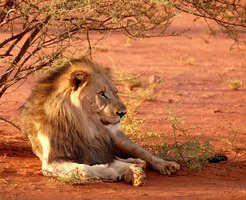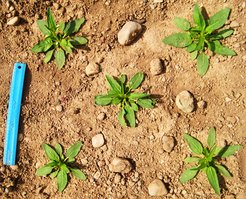
Biodiversity
The United Nations Biodiversity Convention defines biodiversity as the diversity of all living organisms, habitats and ecosystems on land, in freshwater, in the oceans and in the air. Biodiversity comprises
- the variety of different species and the variety within species (taxonomic diversity)
- the genetic diversity of all organisms (genetic diversity)
- the diversity of biotopes and ecosystems as well as ecosystem functions such as pollination and seed distribution including (ecological and functional diversity)
- the diversity of animal behaviour (cultural diversity)
Terms such as biological diversity or species diversity are often used synonymously. According to the above definition, however, the concept of biodiversity is more extensive than the term species diversity, which is merely a measurement of the number of species. Strictly speaking, species diversity is only one aspect of biodiversity.
The sixth mass extinction

Almost everywhere on Earth, biodiversity is decreasing. On the one hand, the loss affects the diversity of species:
- In 2018, out of almost 97,000 animal and plant species on the Red List of the IUCN (International Union for Conservation of Nature), 27,000 species were at risk of extinction
- Scientists have calculated that nowadays a hundred times more vertebrates become extinct each year than under normal conditions without the influence of humans. Since the year 1500, around 600 vertebrate species have become extinct in the wild, of which around 500 of them were after the year 1900. In the last hundred years, as many bird species have disappeared as in the previous 3000 years.
However, it is not only species that are becoming extinct – the abundance of organisms is also decreasing. Three studies clearly show how dramatic the reduction of genetic biodiversity worldwide is:
- Today, 60 per cent fewer vertebrates are living on Earth than in 1970, and in Central and South America that number is almost 90 per cent.
- The number of flying insects in Germany has gone down by at least 75 per cent since 1989.
- The insect biomass in one area of rainforest in Puerto Rico shrank between ten and sixty times from 1976 to 2012. The amount of insect-eating birds, lizards and frogs fell sharply parallel to this.
Why do we need biodiversity?
Biodiversity is commonly seen as something positive and worth protecting – but why? What is the problem if there are fewer plants and animals on Earth?
Many scientific investigations prove that species-rich ecosystems are more stable and can better compensate for disruptions than species-poor ones. Species with different needs fill different niches in the ecosystem. Some insects, for example, are important pollinators, while others spread plant seeds or break down plant and animal waste.
Scientists attempt to calculate the value of these ‘ecosystem services’ in order to represent the cost that each loss represents to biodiversity. In this way, insects pollinate three-quarters of all crop plants and so render a service to the world economy that equates to one trillion dollars per year. The clearing work carried out by dung beetles alone saves American farmers 380 billion dollars per year.
Articles on biodiversity
High diversity can slow global warming
High biodiversity not only has an effect on agriculture, though, but also on the global climate. Species-rich sub-tropical forests can absorb twice as much carbon dioxide as monocultures. The results of a forest experiment in China show that, after eight years, a forest with 16 different tree species accumulates on average 32 tonnes of carbon per hectare, while a monoculture accumulates only 12 tonnes.
Biodiversity has a very similar effect in meadows: In the so-called ‘Jena Experiment’ scientists from Jena, including researchers from the Max Planck Institute for Biogeochemistry, discovered that species-rich meadows accumulate more carbon and therefore extract the greenhouse gas carbon dioxide from the atmosphere. Micro-organisms in the ground such as fungi or bacteria clearly play a key role for the meadow ecosystem in this. They convert plant and animal biomass, and ensure that nutrients are stored in the ground. Even harmful substances are made innocuous by the microbes.
According to the researchers, species-rich meadows deliver more nutrients to the bacteria and fungi in the ground than species-poor surfaces do. It is through this that especially diverse symbiotic communities can occur in the ground, and are able to utilise more biomass than species-poor communities, which has an effect on the productivity of a meadow.
The Jena Experiment

In the Jena Experiment, scientists seeded 480 plots, each one 20 by 20 metres in size, with plant communities of 1, 2, 4, 8, 16, 32 and 64 species. These meadow surfaces are mown twice a year, and freed from all undesired plants on the plot. A surface left entirely on its own and a plot without any growth are used by the researchers for comparison.
Since 2003, botanists, entomologists, microbiologists, hydrologists and other specialists have been analysing different species-rich plots within the Jena Experiment. The biogeochemist Gerd Gleixner from the Max Planck Institute for Biogeochemistry in Jena is especially interested in the carbon accumulated in the soil. His team use fine tubes to draw water and gases out of the ground, and then in the laboratory they put together a cocktail of carbonaceous compounds: the carbon fingerprint of the meadow ecosystem, as it were.
Analyses show that the soil in the meadow accumulates more carbon when there is higher biodiversity, and the same is true of nitrogen. Most effective are species communities comprising early and late plants: for example, grasses grow quickest in spring, while pulses can still prosper in autumn. A well-balanced mix of early and late species therefore best accumulates carbon and nitrogen throughout the year. The plants’ growth form is also important: Shallow- and deep-rooting plants can optimally exploit the nutrients in the soil, while high- and low-growing plants together can effectively use light, humidity and warmth. The more diverse the mix, the better the meadow’s resources can then be used.
The researchers in the Jena Experiment also discovered another advantage to high biodiversity: Plant diversity in a meadow has a positive effect on the diversity of the animals living there. Encouraging species-rich meadows can therefore also protect butterflies, bees and earthworms.
Low diversity in the soil could also be a reason why, over time, monocultures lead to decreasing returns in agriculture. Decreasing diversity also decreases the meadow’s resistance capacity against pests. Diseases wiped out many plots in the Jena Experiment meadow when these were planted with monocultures.
High biodiversity in the soil makes plants more resistant
One experience of the Max Planck Institute for Chemical Ecology researchers in Jena: On their experimental area in Utah, USA, a fungal disease killed off half of the experiment’s plants. After treatment with a mycotoxin had no effect, the scientists treated their plants with a mix of different soil bacteria. Only a mix of three or five bacteria protected the experiment’s plants from the deadly fungus. This shows that individual strains of bacteria only reach their full effectiveness in combination with other bacteria, and contribute to healthier plants.
An out-of-balance symbiotic community in the soil is just one of the problems of monocultures, though. Another is the low genetic diversity. It is for this reason that farmers now cultivate plant types that are optimised for high returns on large surfaces. This means that, as a rule, it is exclusively plants of one genotype that grow across many hectares. As these often produce few natural antigens, farmers have to use dungs and pesticides extensively.
Genetic diversity protects from pests

Field experiments by scientists from the Max Planck Institute for Chemical Ecology in Jena with tobacco plants show how important high genetic diversity of crop plants is. The researchers combined tobacco plants with active antigens of differing strengths against pests on their experimental areas. As plants with gaseous scents attract predatory insects to protect themselves from aphids and weevils, other plants, less capable of defending themselves, also profit from neighbours with very active antigens. The number of pests therefore drops across the entire field. It can therefore be enough to change the activity of certain antigens in individual plants, and so protect the entire field.
Protecting biodiversity
Destruction of habitats, excessive hunting and climate change are in most cases principally responsible for a loss in biodiversity. Just as diverse as the causes for the disappearance of individual species are, so too are the different measures for salvaging biological diversity.
With the Icarus Project, Max Planck scientists hope to gain knowledge of how endangered species can be more effectively protected. With an observation system supported by satellites, researchers can follow animals almost anywhere on Earth, around the clock. In this way, risks can be identified in good time, and habitats important to the survival of species can be identified. Others, meanwhile, are working on the creation of the Red List of Endangered Species in Germany or on linking habitats to protect plants and animals.








